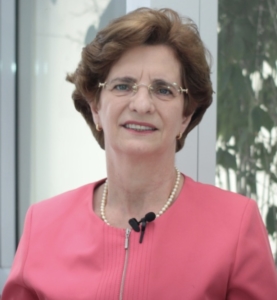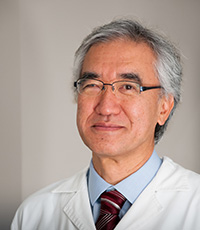Newsletter 2020
Newsletter November 2020: The challenges endured in the state of São Paulo, Brazil in face of COVID-19
Facts and reflections regarding the public and private health system
Public Health System
Maria Carmona, MD – maria.carmona@fm.usp.br
Brazil is the fifth largest country in the world, and it has more than 211 million inhabitants, and about 20% of them living in the state of São Paulo, the venue of the first and majority of SARS-CoV-2 cases in the country. The second country in the world in the number of cases, Brazil is the 13th country in COVID-19 lethality, considering the number of deaths of COVID-19 per million inhabitants. Healthcare is a constitutional right in Brazil and provided by public and private institutions. The Unified Health System (SUS – Sistema Único de Saúde, in Portuguese) is universal and free for everyone, which guaranteed healthcare assistance during the COVID-19 outbreak in 2020, minimising the overall mortality as much as possible.
São Paulo city, the capital of the also called São Paulo State, is in the southeast region of Brazil. The spread of the new coronavirus infection occurred from the capital to the countryside, reaching the towns along highways. As the first cases occurred in high-income people, travellers coming from abroad, most of them were initially cared for in private healthcare hospitals. When the number of cases increases in the general population, public healthcare was profoundly impacted, and the management of assistance depended on a complicated process, mainly in tertiary care.
At the beginning of 2020, with the prospect of increasing cases and being the city of Sao Paulo, the epicentre of the pandemic in Brazil, all São Paulo public and university hospitals were involved in the plan to face the COVID-19 crisis. The largest Latin America healthcare Institution, the Hospital das Clínicas of the Faculdade de Medicina of the Universidade de São Paulo, designated one of its eight hospitals exclusively to treat COVID-19 patients. With a progressive increase of cases, the 900 beds of the Instituto Central were destined solely to patients with COVID-19, surpassing 300 intensive care beds, including those adapted inside 34 operating rooms1. Anaesthesia machines were intensively used as ICU ventilators, minimising the pandemic shortage of medical devices2.
Anaesthesiologists are specialists in accessing the airways and trained in cases of difficult airways. The SAESP (Society of Anesthesiology from the State of São Paulo) coordinated specific retraining of anaesthesiologists and non-anaesthesiologists concerning airway access. The emphasis was on the particularities of safe tracheal intubation in COVID-19 patients, focusing on the best patient care while minimising the exposure to droplets and aerosols. The lessons learned from countries that have already gone through the peak of the pandemic were applied3. The focus was also on the correct use of personal protective equipment and techniques of donning and doffing to minimise the occupational risk of COVID-19. Clinical anaesthesia is the main activity of most anaesthesiologists in the state of São Paulo. Considering the cancellation or postponement of elective surgical cases, during the COVID-19 crisis, many anaesthesiologists collaborated with the healthcare system working as intensivists, helping save many lives.
Besides adopting practices based on the best evidence available in the literature so far, the COVID-19 medical care activities provide opportunities for specific clinical research. On the other hand, the urgent clinical demand in such an odd situation encouraged technological innovation projects to develop new materials and equipment following appropriate protocols.
References
- Carmona MJ et al.. Clinics (Sao Paulo) 2020;75:e202.
- Torres MLA et al.. Bras. Anestesiol. 2020, 70(2): 184-185
- Quintão VC et al.. Bras. Anestesiol. 2020, 70(2): 77-81. Online ahead of print.
Private Health System
Flávio Takaoka, MD, PhD – f.takaoka@anestesiatakaoka.com.br
Inequality
Since late February, COVID-19 exposed the existing inequalities in our society. COVID-19 was brought from those who were able to spend their holidays traveling overseas, mostly to Europe and the US. A few weeks later COVID-19 started affecting those in the lower socioeconomic strata.
Brazil has the world’s largest universal healthcare system (Sistema Único de Saúde-SUS) that covers all our 211 million citizens. It is a relatively young system established in 1990. Despite the difficulties and limitations that all universal health care systems face, Brazil has been able to provide access to all those affected by COVID-19.
We also have a private healthcare system within access of nearly a ⅕ of our population. Apparently, those with access to the private healthcare system were able to flatten the curve early on by following social distancing policy mandates. It may be too early to state that our policies and the healthcare system, both public and private, are going to be able to keep the curve flattened and care for those in need.
This pandemic will have the heaviest impact on the lives (health and wellbeing) of people facing difficult socioeconomic circumstances. In both the short and long term, they are more likely to experience unemployment and financial insecurities.
Sustainability and humanity
There is a strong understanding that in order to preserve ourselves we need to think and act more collaboratively. We should also focus on the important issues, like health and wellbeing, get less distracted by paying less attention to background noise (such as social media).
If we think in terms of (long term) sustainability, we must consider how our health systems are structured and their ability to protect all in times of crisis.
Physicians are humans, too
A perspective stated by Hartzband and Groopman1, in early May, should be understood as another2 call for action for the physician community. The burnout crisis in healthcare workers, despite, as stated in the title of the article1, being briefly interrupted, will not go away if physicians keep listening to our patients’ callings without listening to ourselves.
As previously stated, protecting health should be the responsibility of all. Physicians should stand up and start acting in a different way. Maybe we should start telling our patients that the current healthcare system is killing some more physicians, that suicide ratio among physicians is higher than in the general population, that fewer younger students are choosing health sciences as a career. Patients may not be aware of that, maybe they should know that their health may be in danger in the next crisis that will eventually happen.
References
- Hartzband P, et al. . N Engl J Med. 2020 Jun 25;382(26):2485-2487.
- Britnell M. Human: Solving the global workforce crisis in healthcare. Oxford University Press: Oxford, 2019.
More Newsletter Articles
Visit our Euroanaesthesia 2020 Website for more news on everything related to the virtual congress.
Visit our COVID-19 Resource Hub for other news and resources.











